Small changes in movement can signal big discomfort.
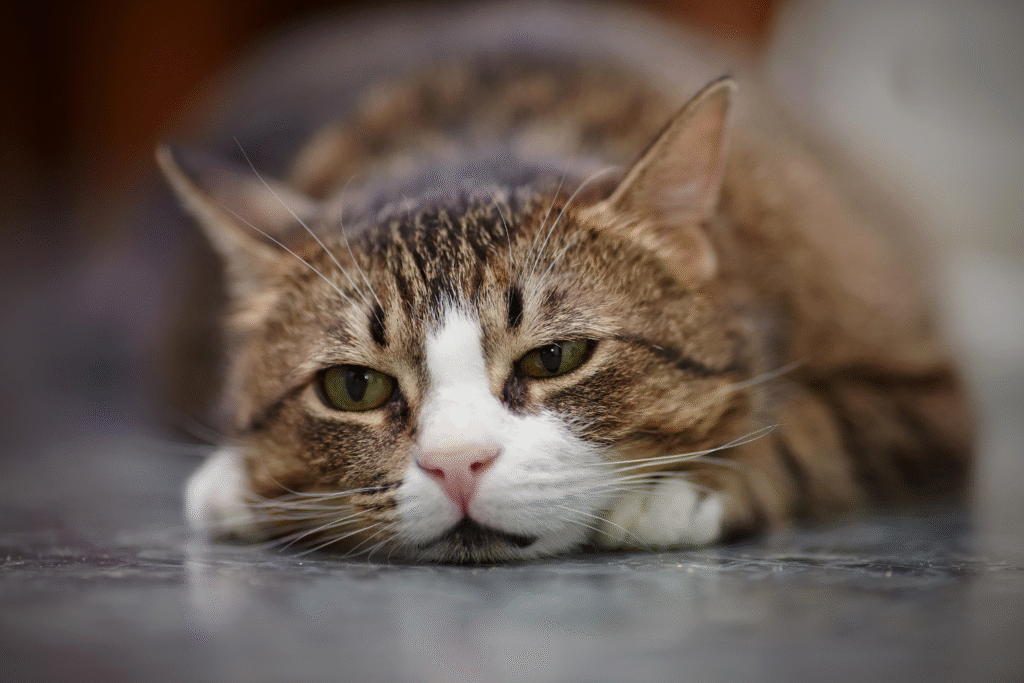
Cats are masters of disguise when it comes to pain. Their instincts tell them to hide weakness, which means by the time you notice something’s off, it’s often been building quietly for weeks or even months. Subtle changes in posture, grooming, or where they nap could all be quiet cries for help that most owners overlook.
Understanding how spinal or hip pain shows up in cats is tricky because it rarely looks dramatic. There’s no limping parade or wailing meow. Instead, it’s the tiny shifts—how they walk, how they stretch, how they greet you—that reveal the story.
1. Your cat hesitates before jumping on familiar surfaces.

A once fearless leap onto the couch turning into hesitation is often an early sign of hip discomfort. Cats with hip or spinal pain may still want to reach their favorite spots but pause, calculating the risk before they go. As reported by the Cornell Feline Health Center, this hesitation stems from joint inflammation that limits flexibility and confidence. Over time, they may seek lower surfaces instead, subtly rearranging their routine to avoid pain.
You might notice your cat circling a spot before attempting the jump, as if strategizing. This moment of indecision says more than words ever could. The shift is gradual but telling, and recognizing it early could spare your cat from worsening arthritis or degenerative joint disease.
2. Grooming becomes patchy or completely stops in certain areas.
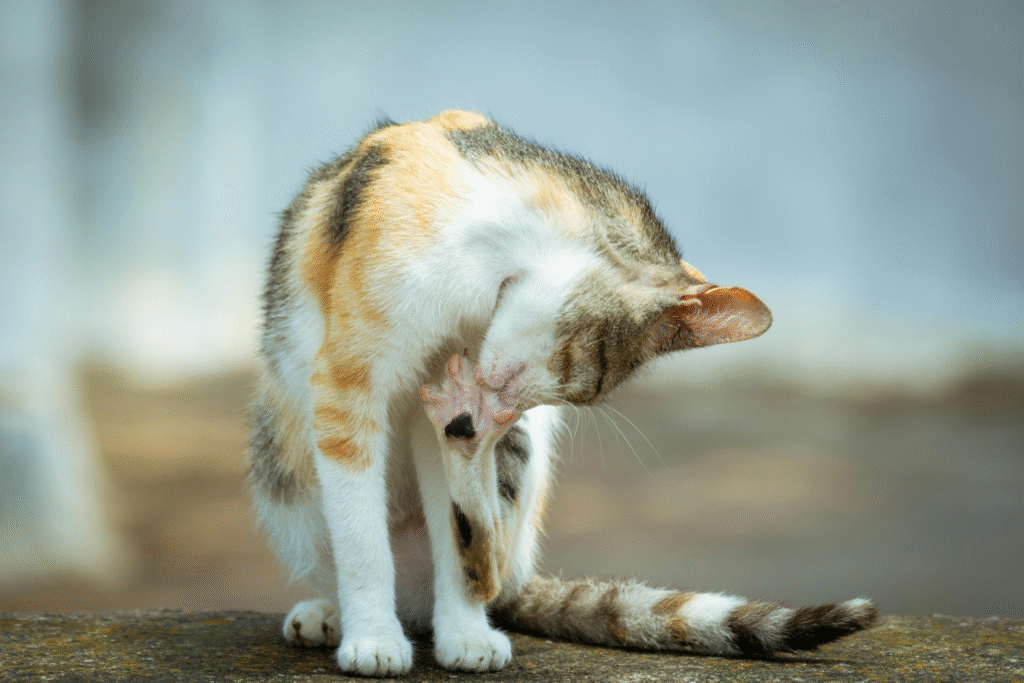
Pain often shows up in grooming habits before limping does, according to the American Association of Feline Practitioners. Cats that can’t twist comfortably to reach their hips or lower back will neglect those areas, leading to greasy fur or mats. The change looks small at first but becomes more pronounced as discomfort grows.
You might misread it as laziness or aging, but it’s usually discomfort. A stiff spine or sore hips make those full-body stretches impossible. Some cats even overgroom around the sore area, licking the fur thin as a coping mechanism, which can mislead owners into thinking it’s a skin issue.
3. The tail carries a low or stiff posture.
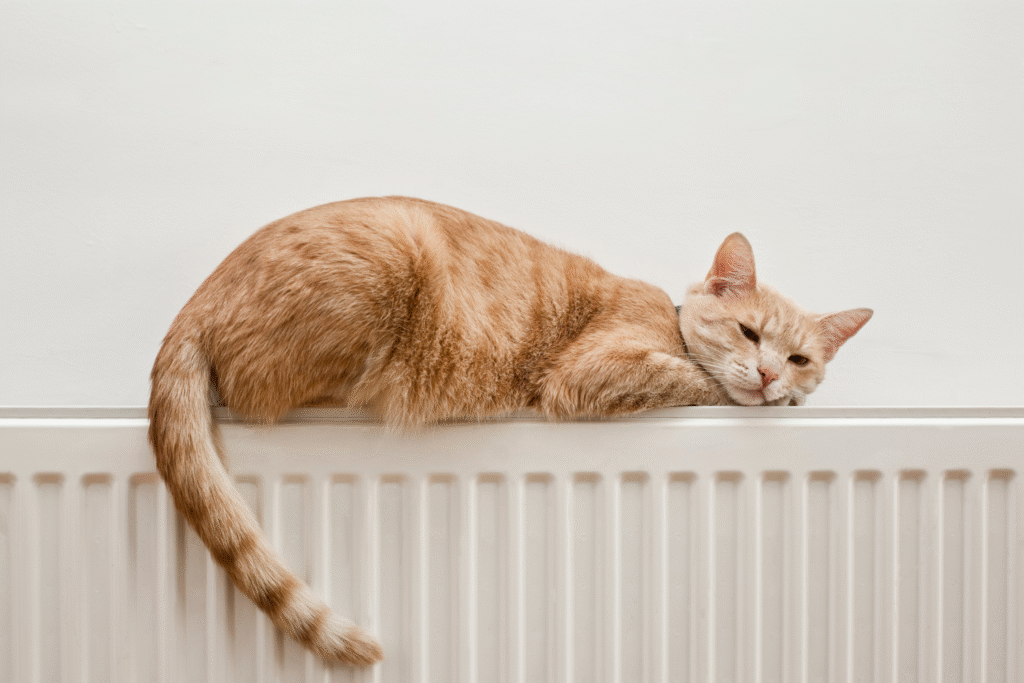
When cats hold their tails lower than usual, or keep them unnaturally straight, it often reflects back pain. As stated by researchers at the International Journal of Feline Medicine, a cat’s tail is an extension of its spine, so stiffness there can signal deeper joint or vertebral issues. Many cats avoid tail movement altogether when nerves around the lower spine are inflamed.
Even subtle differences matter. A cat that once wrapped its tail gracefully while sitting may now leave it limp or awkwardly positioned. This detail often goes unnoticed until other symptoms appear, but it’s one of the earliest red flags of musculoskeletal distress.
4. Stretching looks shorter and less satisfying.
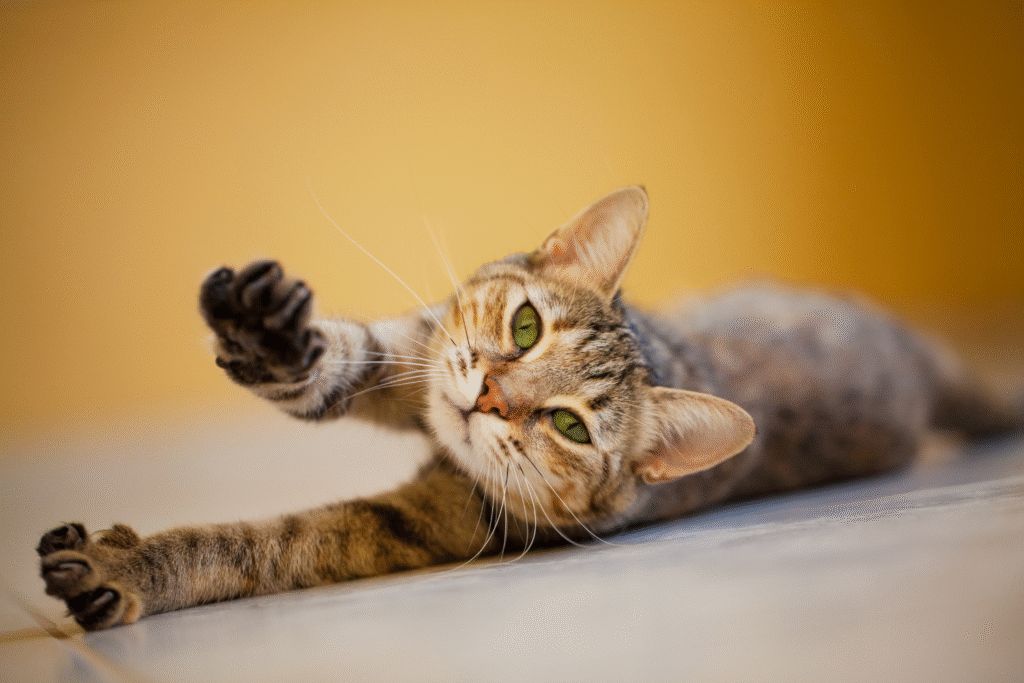
Watch a cat stretch, and you can learn everything about its comfort level. When hip or spinal pain sets in, those long, luxurious stretches shrink. The back doesn’t arch as high, and the hind legs don’t extend fully. It’s as if the movement stops halfway through a story.
This isn’t just stiffness—it’s self-protection. Cats instinctively limit motion that causes pain, even if that means skipping their morning yoga routine. Over time, their flexibility fades, and they compensate with slower, smaller motions that look almost robotic.
5. You notice changes in how your cat sleeps.

Cats in pain often choose flatter, firmer spots instead of soft beds, which make it harder to get up. A cat that once curled in tight balls may start sleeping stretched out, reducing pressure on the hips. The positions might look peaceful, but they’re tactical adjustments.
They’re also quieter when they lie down. The graceful plop turns into a careful, almost choreographed descent. These sleep-related clues are often the first a vet asks about when arthritis is suspected, since they reveal how your cat copes when no one’s watching.
6. Climbing stairs or cat trees becomes less frequent.
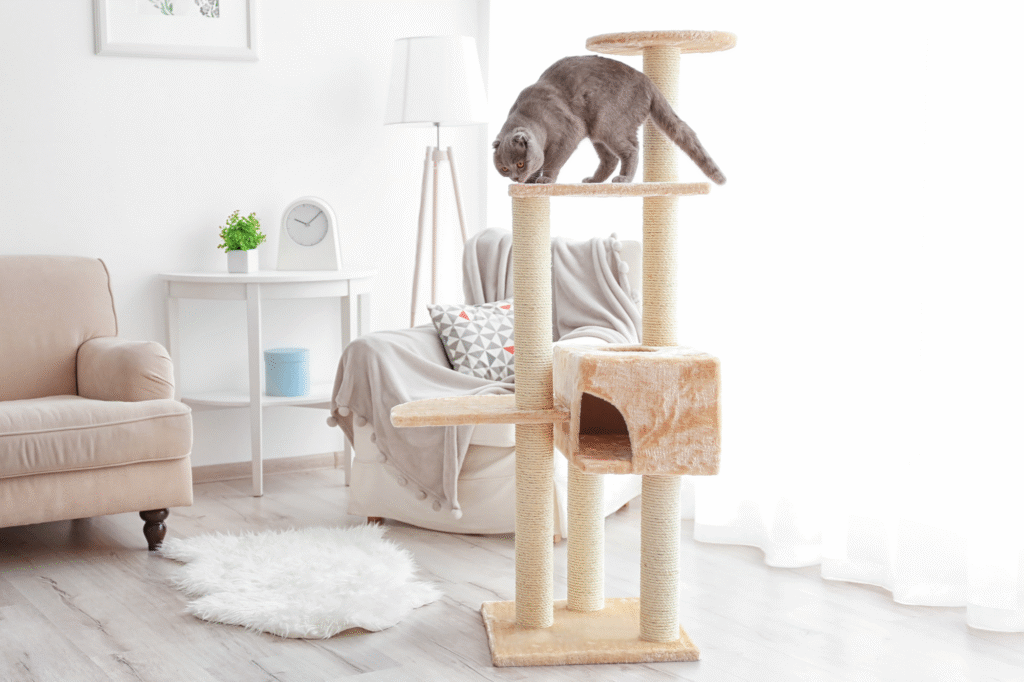
The shift often happens overnight—a cat that once patrolled every step of the staircase suddenly camps out downstairs. Hip or spinal pain makes vertical movement feel risky. It’s not that they’ve lost curiosity; they’ve just learned to avoid the ache that follows.
You may also notice new habits forming, like hanging around lower perches or windowsills. Cats naturally seek elevation for safety and observation, so losing that behavior is significant. It’s their quiet way of saying something hurts.
7. The walk turns slightly uneven or wobbly.
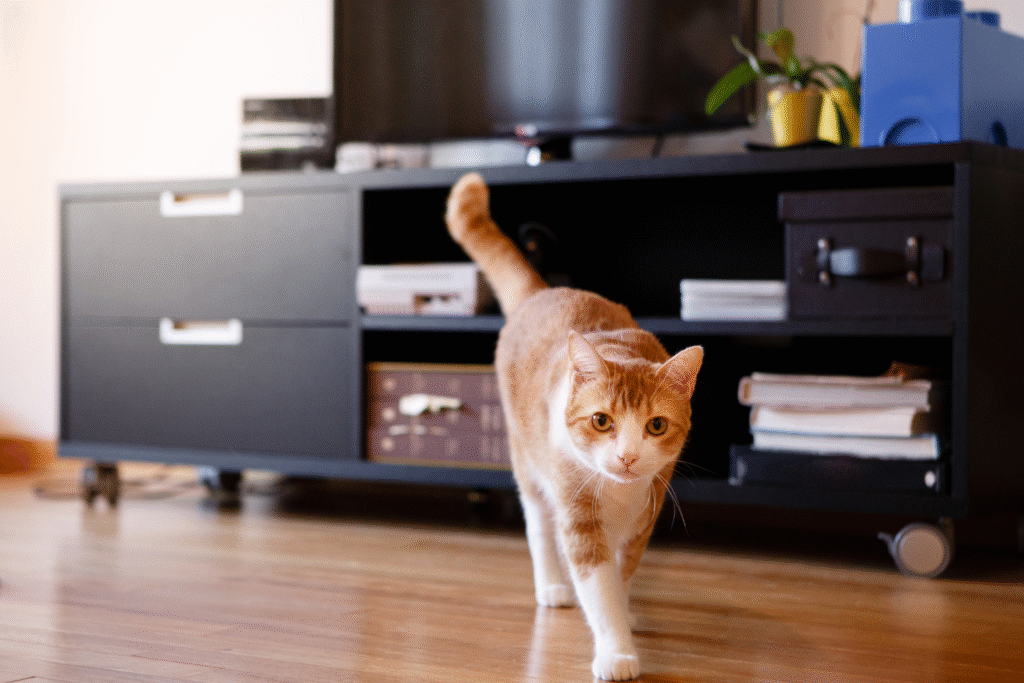
If your cat’s stride looks off—shorter in the back or uneven in rhythm—it can suggest joint stiffness or nerve pain. The gait changes subtly at first, especially on slick floors where stability demands more balance.
These micro-adjustments are compensations, much like how people favor one leg when their knee hurts. Cats redistribute weight to ease tension in the hips or lower spine, which over time can cause muscle loss or further strain elsewhere.
8. They flinch or twitch when you pet their lower back.
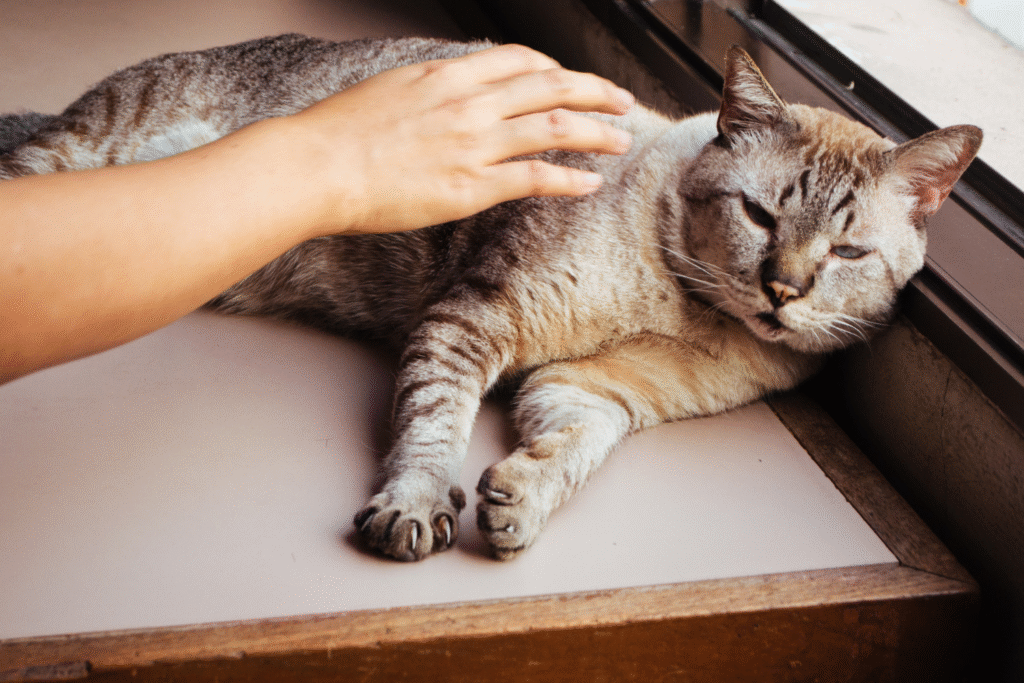
A gentle stroke along the spine that once brought purrs might now trigger a flinch or twitch. This reaction often points to discomfort from inflamed joints or compressed nerves. The tension feels like static under your hand—a quick ripple of defense rather than pleasure.
Some cats even preemptively avoid touch near the hips, moving away before you reach them. It’s their way of guarding sore areas. Paying attention to these tactile cues can catch pain far earlier than visual signs ever will.
9. Appetite subtly drops or feeding posture changes.
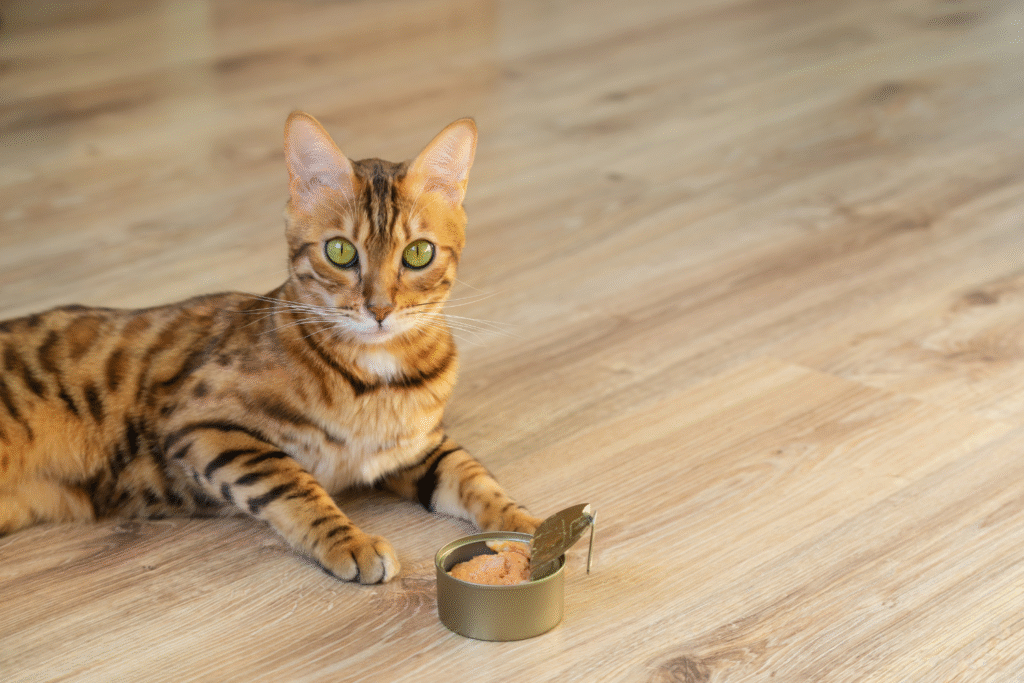
Pain can reshape how your cat eats. Some cats avoid bending too far down to reach the bowl, while others lose appetite entirely because discomfort overshadows hunger. Elevated feeding stations often help because they ease the bend at the hips and spine.
What seems like pickiness may actually be practicality. Cats in pain modify posture constantly to find the least stressful position. When meals become uncomfortable, it’s not about the food—it’s about the angle.
10. Vocalizations shift from contented to cautious.

A cat’s voice changes with its comfort level. Low grumbles, huffs, or strained meows during movement can point to underlying pain. These aren’t the dramatic yowls of distress but quiet, deliberate signals of physical effort.
Each sound becomes an emotional breadcrumb trail. Cats in hip or spinal pain sometimes vocalize when jumping or landing, or even when stretching. If the timing aligns with movement, the noise is their substitute for a complaint.
11. Withdrawal from play or social contact becomes noticeable.
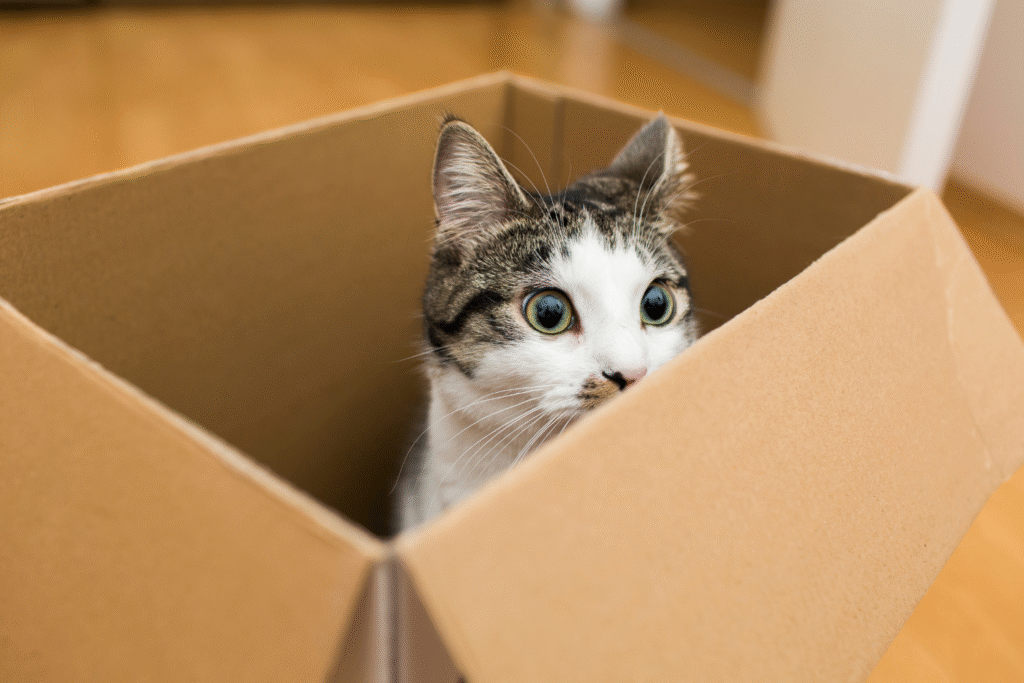
A once playful or affectionate cat that starts spending more time alone isn’t just moody. With chronic pain, activity and interaction take energy they no longer have to spare. The retreat isn’t emotional distance—it’s self-preservation.
This withdrawal often happens last, after other signs have gone unnoticed. It’s the final stage of adaptation, where comfort finally outweighs curiosity. When cats reach this point, early intervention becomes crucial, since pain management can restore not just movement, but the spark that makes them who they are.
